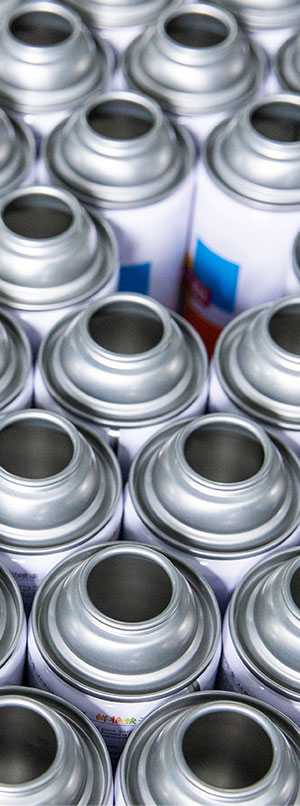Understanding the Differences Between Silicone Sealant and Caulk
Silicone sealant and caulk are two commonly used products for sealing and bonding applications. While they serve similar purposes, there are important differences between the two. In this article, we will explore the distinctions between silicone sealant and caulk, discuss their respective applications, and provide guidance on choosing the right product for your project.
Is silicone sealant the same as caulk? The main difference between silicone sealant and caulk lies in their composition. Silicone sealant is made from silicone polymers, which give it exceptional flexibility and durability. Caulk, on the other hand, is typically made from acrylic or latex-based compounds, which offer good adhesion properties.

The Applications of Silicone Sealant and Caulk
Silicone sealant is known for its excellent weather resistance, making it suitable for both interior and exterior applications. It can withstand extreme temperatures, UV radiation, and moisture, making it ideal for sealing windows, doors, and other outdoor elements. Silicone sealant is also commonly used in areas that require high flexibility, such as expansion joints.
Caulk, on the other hand, is commonly used for filling gaps and cracks in various surfaces. It is typically used for interior applications, such as sealing gaps around windows, baseboards, and countertops. Caulk offers good adhesion properties and can be easily painted over, making it a popular choice for finishing and cosmetic purposes.
Choosing the Right Product for Your Project
When choosing between silicone sealant and caulk, consider the specific requirements of your project. If you need a sealant that can withstand extreme weather conditions or require high flexibility, silicone sealant is the preferred choice. If you are looking for a product to fill gaps and provide a smooth finish, caulk may be more suitable.
It is worth noting that silicone sealant and caulk are available in different formulations to cater to specific applications. For example, there are specialized silicone sealants designed for aquariums or sanitary applications. Similarly, there are different types of caulk, such as acrylic caulk or siliconeized latex caulk, each offering unique properties.
Understanding the Distinctions by SANVO Company
When it comes to sealing and bonding applications, silicone sealant and caulk are often used interchangeably. However, there are distinct differences between the two, and SANVO Company’s silicone sealant offers unique advantages that set it apart from traditional caulk.
SANVO’s silicone sealant is formulated with high-quality silicone polymers, which provide superior performance and durability. Unlike caulk, which is typically made from acrylic or latex-based materials, silicone sealant offers several key benefits that make it a preferred choice in many applications.
First and foremost, SANVO’s silicone sealant offers excellent adhesion to a wide range of materials, including glass, metal, ceramics, and plastics. This strong bonding capability ensures a reliable and long-lasting seal, making it suitable for various construction, industrial, and household projects.
Additionally, SANVO’s silicone sealant is highly resistant to extreme temperatures. It can withstand both high heat and freezing cold without losing its adhesion properties or breaking down. This makes it ideal for outdoor applications where exposure to harsh weather conditions is a concern, such as sealing windows, doors, and exterior joints.
Furthermore, SANVO’s silicone sealant exhibits outstanding resistance to moisture and water. It forms a waterproof barrier that effectively seals gaps, cracks, and joints in wet environments, such as bathrooms, kitchens, and swimming pools. Its resistance to mold and mildew growth ensures a hygienic and long-lasting seal.
Another notable advantage of SANVO’s silicone sealant is its flexibility and elasticity. It can accommodate movement and expansion of materials without cracking or compromising its adhesive strength. This makes it an excellent choice for sealing joints and gaps that are subjected to constant movement or vibration, such as in plumbing or HVAC systems.
Moreover, SANVO’s silicone sealant offers excellent UV resistance. It does not degrade or become discolored when exposed to sunlight, ensuring its longevity and performance in outdoor applications.
In terms of application, SANVO’s silicone sealant is easy to work with. Its smooth consistency allows for effortless application using a caulking gun, and any excess sealant can be cleaned up easily. This results in a neat and professional finish, enhancing the overall aesthetics of the project.
In conclusion, while silicone sealant and caulk are often used interchangeably, SANVO Company’s silicone sealant offers distinct advantages over traditional caulk. Its superior adhesion, resistance to extreme temperatures and moisture, flexibility, UV resistance, and ease of application make it a reliable choice for various sealing and bonding applications. Whether for construction, industrial, or household use, SANVO’s silicone sealant provides exceptional performance and durability.
Read more:
https://sanvochemicals.com/custom-spray-paint-colors/
https://sanvochemicals.com/how-to-spray-paint-metal/
https://sanvochemicals.com/spray-paint-ideas/
https://sanvochemicals.com/is-spray-paint-acrylic/
https://sanvochemicals.com/silicone-sealant-2/
https://sanvochemicals.com/aquarium-silicone-sealant/
